Development of Remote Controller for Automatic Switch using IED
- Yoshikatsu Nakao
- Tomotake Hakamada
- Shogo Sugiyama
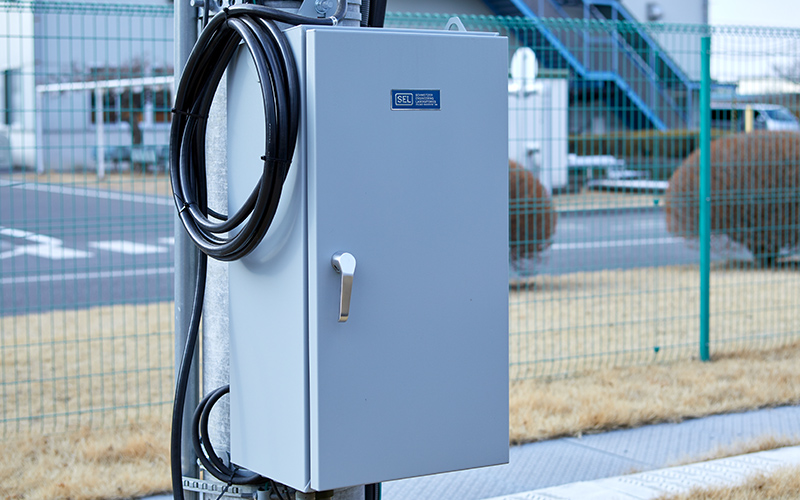
Japan has the world's top-class stable distribution system operation technology and distribution system network environment. Electricity, which we use casually, is based on reliable technology. In Japan, a power distribution automation system has been introduced to improve the reliability of power distribution and for speedy restoration in the event of an accident, and distribution lines are divided into appropriate sections by section switches.
TAKAOKA TOKO has been working on the development of a control device (remote controller for automatic switch: hereinafter referred to as controller) for automatically controlling this section switch. Even in an accident, this controller can quickly identify and separate the accident section automatically and can distribute power to healthy sections unrelated to the accident.
Overseas, especially in developing countries, however, a stable distribution system network environment has not yet been established, and there are many countries and regions where the introduction of automation systems is delayed. This time, TAKAOKA TOKO has developed a controller, using an IED*2, that supports the "time-limiting-type accident investigation method*1," which is widely used in Japan as an automatic control method. We will introduce the technology that supports electric power infrastructure, which is expected to be introduced overseas in the future.
*1) A method for finding fault sections in the event of power outages due to accidents, etc. In the event of a distribution line fault, the circuit breaker (CB) at the substation is quickly opened to shut down the entire distribution line and eliminate the fault. After a certain period of time has passed, the circuit breaker is reclosed, and power is restored in each section, starting with the section switch closer to the substation. When the section switch is closed, the section where the power outage occurs again is found to be the fault section.
*2) Abbreviation for Intelligent Electronic Device (high-performance electronic device). The system can be rationalized and standardized, and it has the versatility to enable a wide range of user customization by combining built-in functions. Defined in IEC61850-2.
Technology
Development of automatic switch controllers for overseas markets using the International Standard IED made by SEL*3.
As a trend in the overseas electric power industry, substations are becoming more advanced with the introduction of IoT, etc., while the distribution system network environment itself is still under development. It is therefore uncommon that once an accident occurs, it takes a long time to restorer. TAKAOKA TOKO has succeeded in developing a new controller that incorporates a time-limiting-type accident investigation method, which is not widely used overseas, into the IED of SEL that has international standards.
If this controller is introduced into the distribution system network overseas, it will greatly contribute to the reduction of power outage time in case of accident. In the future, in preparation for a full-scale entry into the overseas market, we will conduct environmental resistance tests in outdoor test fields for the application to overseas power distribution automation systems, as well as accident response tests on 22kV power distribution lines, which are widely used in overseas power distribution networks.
*3) Abbreviation for Schweitzer Engineering Laboratories, Inc.. Head office in Pullman, USA. Since July 2013, TAKAOKA TOKO has been in a domestic agency contract with SEL.

Profile
-
 Yoshikatsu NakaoPower Equipment & System Business Division
Yoshikatsu NakaoPower Equipment & System Business Division
System Manufacturing Department
IED & System Design Group
Group Manager
(at the time of development) -
 Tomotake HakamadaPower Equipment & System Business Division
Tomotake HakamadaPower Equipment & System Business Division
System Manufacturing Department
IED & System Design Group
(at the time of development) -
 Shogo SugiyamaPower Equipment & System Business Division
Shogo SugiyamaPower Equipment & System Business Division
System Manufacturing Department
IED & System Design Group
(at the time of development)
The time-limiting-type accident investigation function holds a key to shorten the power outage time after an accident.
Hakamada:To talk about the controller, I think it would be easier to understand if we start by explaining the structure of the distribution system as a whole. The electricity that normally reaches us is sent from a power station through a substation, with the voltage being lowered step by step, and delivered to each home through a distribution line called a feeder. In order to prevent power outages in all areas when an accident occurs, this distribution line is managed by dividing areas by sections. The circuit breaker, called a switch, allows the sections to be divided so that power can be distributed for each section.
Nakao:Generally, electric power companies in Japan employ highly developed distribution networks, commonly referred to as multi-division and multi-interconnection networks. As Hakamada explained above, multi-division is a reduction of power outage areas in case of emergency by dividing distribution lines by sections through switches. In a multi-interconnection system, distribution lines from different substations are connected to the same section, so that even if distribution becomes impossible from one substation due to a distribution line accident or the like, the distribution route from another substation is secured.

Hakamada:A device that automatically controls these switches is the controller that we are developing. If an accident occurs in a distribution line, a large amount of current may flow, causing a power outage. For restoration, the circuit breaker called CB of the substation must be closed first, and electricity must be conducted from the substation to the nearest switch A. After that, if the switches are closed continuously in order of A, B, and C, electricity will flow in each section. Repeating this can get to the accident section somewhere, causing the power outage to occur again, resulting in identifying the accident section. The system is designed to solve the power outage by reconnecting the distribution system, after that, without using the corresponding section. Since this series of operations requires quickly operating the switch, however, the controller plays an important role.
Nakao:The function that identifies the accident section while managing the time in this way is called time-limiting-type accident investigation function. This function has been used for a long time in the well-developed power distribution system of Japan. Actually, however, in many overseas countries, especially in developing countries where the power infrastructure has not yet been developed, the need for Japan's technological capabilities for electric power can be said to be very high.

To support the future of electric power infrastructure in developing countries.
Sugiyama:At that time, only the controllers, for the domestic market, having time-limiting-type accident investigation function were those developed according to Japan's own standards, and therefore, it difficult to expand them overseas. From the beginning of the development, our mission was to reflect this accident investigation function in SEL's IED devices, and to manufacture a controller that complies with the international standards in anticipation of overseas deployment. The international communication standard called IEC61850, which was adopted for the controller this time, is not so widely used in Japan. However, I started investigating and researching the support of IED customization about two years before this project.
Hakamada:In Japan, products are generally developed in response to orders such as "I want this kind of thing." However, when developing a product overseas, we have to formulate hypotheses by ourselves based on the needs. How far can it be adjusted to overseas specifications when it has satisfied the minimum elements required for the time-limiting-type accident investigation function? After assembling a logic on the desk, we repeatedly verified it with test cases.
Sugiyama:Since we had to proceed with the commercialization of the product in accordance with SEL's specifications, it was strenuous work to study by using English manuals.

Nakao:As mentioned above, in Japan, distribution lines are often multi-divided and multi-interconnected, and power distribution automation systems including controllers are also in place. Therefore, even if a power outage occurs, there are not so many cases in which it will take a long time to restore. However, once a power outage occurs overseas, it is necessary to identify the site first on foot in order to investigate where the accident occurred. Naturally, it will take some time to restore. The issue of how much time can be shortened until the discovery of the fault section can be considered as an issue of the country's power infrastructure.
Hakamada:This newly developed controller is scheduled to be introduced to the Philippines in the fall of 2018 as part of JICA's "Project for Promotion of Diffusion of Private Technologies for Social and Economic Development in Developing Countries." Currently, we continue to conduct tests for the implementation in our in-house test environment for more than half a year.
Sugiyama:Even if the construction at the site is completed, it will not lead to providing a better electric power infrastructure environment simply by restoring power after a power outage. SEL's IEDs are highly functional, and are equipped with functions to measure not only current and voltage, but also various information of the power distribution system including power, frequency, etc. Statistical analysis of the data also shows the possibility of the development into a power infrastructure consulting business, such as how much electricity power rate can be reduced when it is provided to the region.
Nakao:In Japan, it is a matter of course that electricity can be freely used 24 hours a day, 365 days a year. However, there are many countries where electricity cannot be used in a stable manner. The switches and controllers we develop are also lights for the future, helping people with electrical disabilities.

Latest articles
-
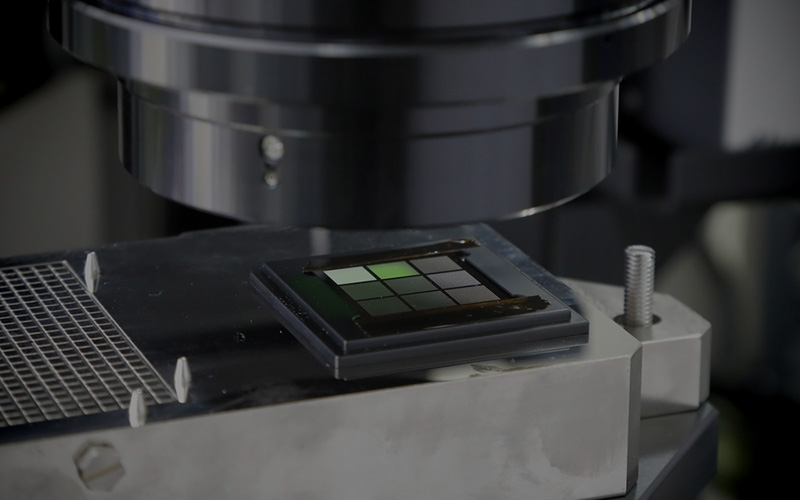 interviewThe confocal surface shape measurement system for semiconductor reliabilityIt is no exaggeration to say that semiconductors are used in everything supporting our lives and industry in modern society. Examples include smartphones, home appliances, and industrial products in various fields.
interviewThe confocal surface shape measurement system for semiconductor reliabilityIt is no exaggeration to say that semiconductors are used in everything supporting our lives and industry in modern society. Examples include smartphones, home appliances, and industrial products in various fields. -
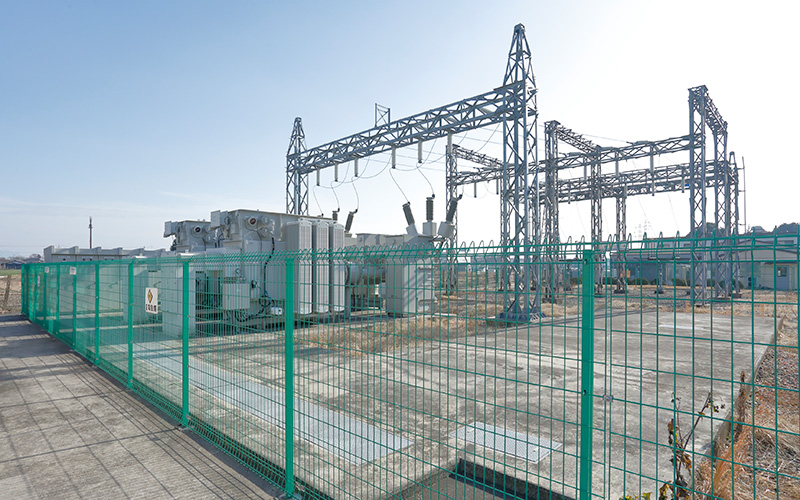 interviewImplementation of a Sensor Solution for Substation DigitalizationGlobal energy prices remain at high levels. The presumed cause is the imbalance between energy supply and demand due to recovery in economic activity from the spread of COVID-19, unseasonable weather, disasters, Russia's invasion of Ukraine, and other factors. The soaring energy prices naturally have an impact on the electricity sector, putting not only ordinary households but also electricity suppliers, or electric power companies, in a difficult situation. Power companies are being forced to cut costs to keep power prices down.
interviewImplementation of a Sensor Solution for Substation DigitalizationGlobal energy prices remain at high levels. The presumed cause is the imbalance between energy supply and demand due to recovery in economic activity from the spread of COVID-19, unseasonable weather, disasters, Russia's invasion of Ukraine, and other factors. The soaring energy prices naturally have an impact on the electricity sector, putting not only ordinary households but also electricity suppliers, or electric power companies, in a difficult situation. Power companies are being forced to cut costs to keep power prices down. -
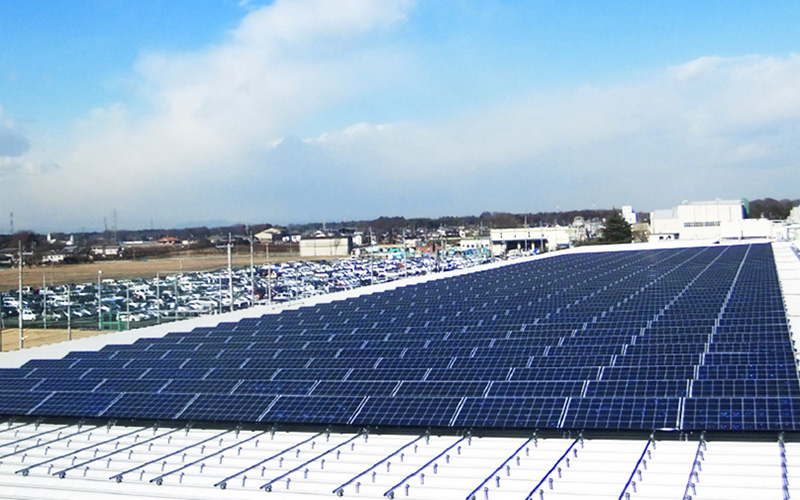 interviewDevelopment of Techniques for Solar Power Generation Prediction Using AIIn order to promote carbon neutrality, the use of renewable energy that doesn't emit CO2 is expanding.Among renewable energy resources, solar power generation is an important one which will continue to grow in popularity.
interviewDevelopment of Techniques for Solar Power Generation Prediction Using AIIn order to promote carbon neutrality, the use of renewable energy that doesn't emit CO2 is expanding.Among renewable energy resources, solar power generation is an important one which will continue to grow in popularity. -
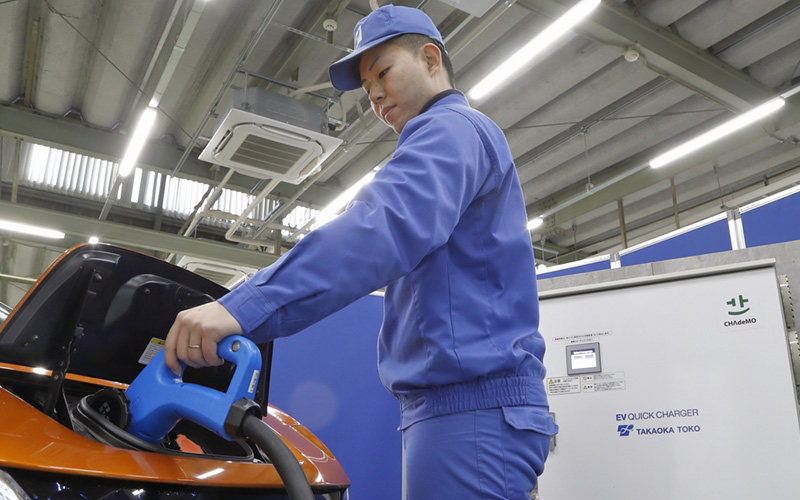 interviewDevelopment of Medium-Capacity Quick Charger for Electric VehiclesIn anticipation of expansion of EV charging infrastructure in Japan, where the EV shift is accelerating, we worked on the development of the “medium-capacity quick charger (B11)” as a charger that meets the needs for intermediate chargers between normal chargers and quick chargers. This article introduces the features of the product, ingenuity in the development process, and our future vision.
interviewDevelopment of Medium-Capacity Quick Charger for Electric VehiclesIn anticipation of expansion of EV charging infrastructure in Japan, where the EV shift is accelerating, we worked on the development of the “medium-capacity quick charger (B11)” as a charger that meets the needs for intermediate chargers between normal chargers and quick chargers. This article introduces the features of the product, ingenuity in the development process, and our future vision.
